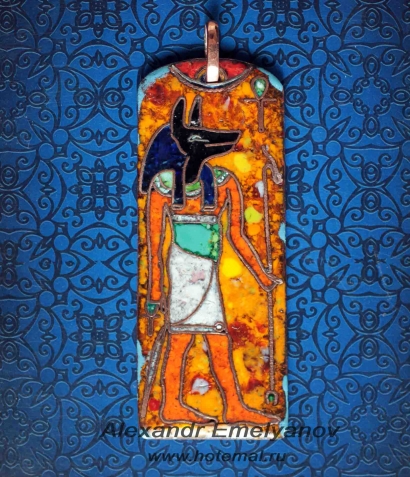–Р–ї–µ–Ї—Б–∞–љ–і—А –Х–Љ–µ–ї—М—П–љ–Њ–≤. –Я–∞–љ–љ–Њ –Ы–Њ—В–Њ—Б (–≤–Њ–і—П–љ–∞—П –ї–Є–ї–Є—П) –Є –Я–∞–њ–Є—А—Г—Б. –Ь–µ–і—М, –≥–Њ—А—П—З–∞—П –њ–µ—А–µ–≥–Њ—А–Њ–і—З–∞—В–∞—П —Н–Љ–∞–ї—М

–Ы–Њ—В–Њ—Б –Є –њ–∞–њ–Є—А—Г—Б
–°–≤—П—Й–µ–љ–љ—Л–µ —А–∞—Б—В–µ–љ–Є—П –Ф—А–µ–≤–љ–µ–≥–Њ –Х–≥–Є–њ—В–∞. –°—В–Є–ї–Є–Ј–Њ–≤–∞–љ–љ—Л–µ –Є–Ј–Њ–±—А–∞–ґ–µ–љ–Є—П —Ж–≤–µ—В–Њ–≤ –Є –±—Г—В–Њ–љ–Њ–≤ –±–µ–ї–Њ–є –≤–Њ–і—П–љ–Њ–є –ї–Є–ї–Є–Є, –Њ—И–Є–±–Њ—З–љ–Њ –љ–∞–Ј—Л–≤–∞–µ–Љ—Л–є «–ї–Њ—В–Њ—Б–Њ–Љ», –Ј–Њ–љ—В–Є–Ї–Њ–≤ –Є –ї–Є—Б—В—М–µ–≤ –њ–∞–њ–Є—А—Г—Б–∞ - —В—А–∞–і–Є—Ж–Є–Њ–љ–љ—Л–є —Н–ї–µ–Љ–µ–љ—В –і–µ–Ї–Њ—А–∞—В–Є–≤–љ–Њ–≥–Њ –Є—Б–Ї—Г—Б—Б—В–≤–∞ –Ф—А–µ–≤–љ–µ–≥–Њ –Х–≥–Є–њ—В–∞. –С–µ–ї–∞—П –≤–Њ–і—П–љ–∞—П –ї–Є–ї–Є—П –Є—Б–њ–Њ–ї—М–Ј–Њ–≤–∞–ї—Б—П –і–ї—П —Г–Ї—А–∞—И–µ–љ–Є—П , –∞ –љ–∞ –ї–Є—Б—В—М—П—Е –Я–∞–њ–Є—А—Г—Б–∞ –њ–Є—Б–∞–ї–Є—Б—М –і—А–µ–≤–љ–µ–µ–≥–Є–њ–µ—В—Б–Ї–Є–µ –Ї–љ–Є–≥–Є. –¶–≤–µ—В—Л —Н—В–Є—Е —А–∞—Б—В–µ–љ–Є–є –Є—Б–њ–Њ–ї—М–Ј–Њ–≤–∞–ї–Є—Б—М –≤ –Ї–∞—З–µ—Б—В–≤–µ –њ–Њ–і–љ–Њ—И–µ–љ–Є–є –С–Њ–≥–∞–Љ, —Г–Ї—А–∞—И–µ–љ–Є–Є —Е—А–∞–Љ–Њ–≤ –Є –ґ–Є–ї–Є—Й. –Т–Њ–і—П–љ–∞—П –ї–Є–ї–Є—П –Є –Я–∞–њ–Є—А—Г—Б —П–≤–ї—П—О—В—Б—П —Б–Є–Љ–≤–Њ–ї–∞–Љ–Є –≤—Б–µ–є –і—А–µ–≤–љ–µ–µ–≥–Є–њ–µ—В—Б–Ї–Њ–є —Ж–Є–≤–Є–ї–Є–Ј–∞—Ж–Є–Є, –Ї—Г–ї—М—В—Г—А—Л –Є –Ї–∞–љ–Њ–љ–Њ–≤ –Ї—А–∞—Б–Њ—В—Л. –Ъ—А–Њ–Љ–µ —В–Њ–≥–Њ —Ж–≤–µ—В–Њ–Ї –±–µ–ї–Њ–є –≤–Њ–і—П–љ–Њ–є –ї–Є–ї–Є–Є —Б–Є–Љ–≤–Њ–ї–Є–Ј–Є—А—Г–µ—В –љ–µ–њ—А–µ—А—Л–≤–љ–Њ—Б—В—М –ґ–Є–Ј–љ–Є, —З—Г–≤—Б—В–≤–µ–љ–љ–Њ—Б—В—М –Є –Ї—А–∞—Б–Њ—В—Г, –∞ –њ–∞–њ–Є—А—Г—Б —В—А–∞–і–Є—Ж–Є–Њ–љ–љ–Њ —Б–≤—П–Ј—Л–≤–∞–ї—Б—П —Б –Љ—Г–і—А–Њ—Б—В—М—О, —Б–Њ—Е—А–∞–љ–µ–љ–Є–µ–Љ –Ј–љ–∞–љ–Є–є –Є —В—А–∞–і–Є—Ж–Є–є
Hand crfted Cloisonne Enamel Decorative Panel in Egyptian Style Lotus (Water Lily flower). Author - Alexandr Emelyanov
- –Т–Њ–є–і–Є—В–µ –љ–∞ —Б–∞–є—В –і–ї—П –Њ—В–њ—А–∞–≤–Ї–Є –Ї–Њ–Љ–Љ–µ–љ—В–∞—А–Є–µ–≤
- –Ь–Є–љ–Є–∞—В—О—А–∞
- –Ъ–∞—А—В–Є–љ–Ї–∞ –љ–∞ –≥–ї–∞–≤–љ–Њ–є
- –Ш–Ї–Њ–љ–Ї–Є –≤ –≥–∞–ї–µ—А–µ–µ

